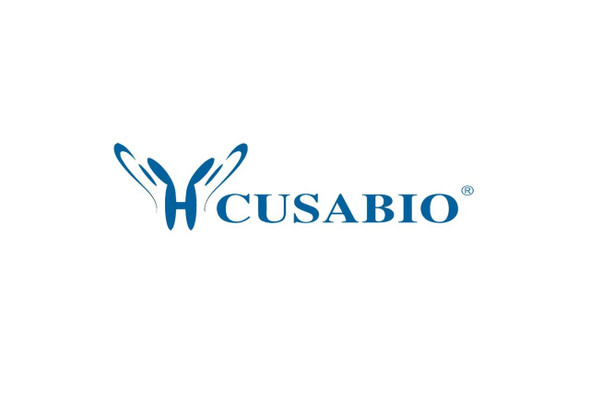Cusabio Active Proteins
Recombinant Human Fibroblast growth factor 23 protein (FGF23) (Active) | CSB-AP002481HU
- SKU:
- CSB-AP002481HU
- Availability:
- 5 to 10 Working Days
Description
Recombinant Human Fibroblast growth factor 23 protein (FGF23) (Active) | CSB-AP002481HU | Cusabio
Protein Description: Full Length of Mature Protein
Alternative Name (s) : FGF-23, Tumor-derived hypophosphatemia-inducing factor,
Gene Names: FGF23,HYPF,UNQ3027/PRO9828
Research Areas: Cancer
Species: Homo sapiens (Human)
Source: E.Coli
Tag Info: Tag-Free
Expression Region: 25-251aa
Sequence Info: YPNASPLLGS SWGGLIHLYT ATARNSYHLQ IHKNGHVDGA PHQTIYSALM IRSEDAGFVV ITGVMSRRYL CMDFRGNIFG SHYFDPENCR FQHQTLENGY DVYHSPQYHF LVSLGRAKRA FLPGMNPPPY SQFLSRRNEI PLIHFNTPIP RRHTRSAEDD SERDPLNVLK PRARMTPAPA SCSQELPSAE DNSPMASDPL GVVRGGRVNT HAGGTGPEGC RPFAKFI
Biological Activity: Fully biologically active when compared to standard. The ED50 as determined by thymidine uptake assay using FGF-receptors transfected BaF3 cells is less than 0.5 μg/ml, corresponding to a specific activity of > 2.0 × 103 IU/mg in the presence of 0.3 µg/ml of rMuKlotho and 10 μg/ml of heparin.
MW: 25.3 kDa
Purity: >95% as determined by SDS-PAGE and HPLC.
Endotoxin: Less than 1.0 EU/µg as determined by LAL method.
Relevance: Regulator of phosphate homeostasis. Inhibits renal tubular phosphate transport by reducing SLC34A1 levels. Upregulates EGR1 expression in the presence of KL (By similarity) . Acts directly on the parathyroid to decrease PTH secretion (By similarity) . Regulator of vitamin-D metabolism. Negatively regulates osteoblast differentiation and matrix mineralization. {ECO:0000250, ECO:0000269|PubMed:11062477, ECO:0000269|PubMed:11409890, ECO:0000269|PubMed:15040831, ECO:0000269|PubMed:16597617, ECO:0000269|PubMed:18282132}.
PubMed ID: 11032749; 11062477; 11344269; 12975309; 15489334; 15340161; 11409890; 11157998; 12130585; 12952917; 15268897; 15040831; 16597617; 16638743; 18282132; 20094046; 17339340; 16151858; 15590700; 16030159; 24680727
Notes: Repeated freezing and thawing is not recommended. Store working aliquots at 4℃ for up to one week.
Function: Regulator of phosphate homeostasis. Inhibits renal tubular phosphate transport by reducing SLC34A1 levels. Upregulates EGR1 expression in the presence of KL (By similarity) . Acts directly on the parathyroid to decrease PTH secretion (By similarity) . Regulator of vitamin-D metabolism. Negatively regulates osteoblast differentiation and matrix mineralization.
Involvement in disease: Hypophosphatemic rickets, autosomal dominant (ADHR) ; Tumoral calcinosis, hyperphosphatemic, familial (HFTC)
Subcellular Location: Secreted
Protein Families: Heparin-binding growth factors family
Tissue Specificity: Expressed in osteogenic cells particularly during phases of active bone remodeling. In adult trabecular bone, expressed in osteocytes and flattened bone-lining cells (inactive osteoblasts) .
Paythway: MAPKsignalingpathway
Form: Lyophilized powder
Buffer: Lyophilized from a 0.2 µm filtered PBS, pH 7.4
Reconstitution: We recommend that this vial be briefly centrifuged prior to opening to bring the contents to the bottom. Please reconstitute protein in deionized sterile water to a concentration of 0.1-1.0 mg/mL.We recommend to add 5-50% of glycerol (final concentration) and aliquot for long-term storage at -20℃/-80℃. Our default final concentration of glycerol is 50%. Customers could use it as reference.
Uniprot ID: Q9GZV9
Uniprot Entry Name: FGF23_HUMAN
HGNC Database Link: HGNC
UniGene Database Link: UniGene
KEGG Database Link: KEGG
STRING Database Link: STRING
OMIM Database Link: OMIM









